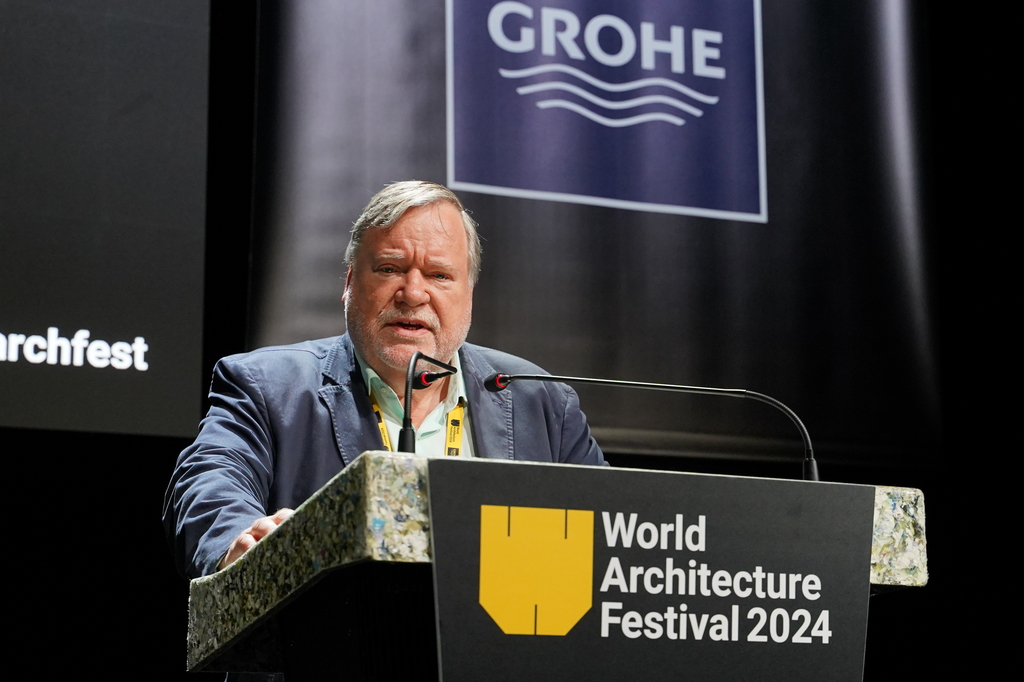
Letter from London January
A disastrous budget and a rag-bag of political ‘initiatives’ have cast gloom across the UK in general and London in particular, with financial markets spooked by generous gilt offers from a government whose fiscal rules look fanciful – unless you are a fan of what Labour used to call ‘austerity’, when the Conservatives were attempting unsuccessfully to live within the nation’s means, writes Paul Finch.
Failure of the political parties to get to grips with a growing underclass, which prefers hand-outs to work, and which increasingly claims sickness benefits, now distributed like confetti at a wedding, isn’t helping. The more we spend beyond our means, the worse things seem to get. Nobody has planned for the housing and health service implications of net inward migration now running at approaching 750,000 a year, which is why architects are not flourishing despite obvious demands for new buildings.
The cost and risk of taking on new employees has rocketed as a result of the new-ish government’s belief that increasing taxes on employers, and giving employees additional rights in respect of where and how they work, almost to the point of how much they work, has resulted in a wave of under-reported redundancies across London’s big architect practices.
Government disillusion with the cost of building has reached new heights (or lows), following a report by the Infrastructure Projects Authority, which monitors major proposals in respect of, among other things, ‘project definition, schedule, budget, quality and/or benefits delivery’. It has given a ‘red’ rating to a series of current proposals, suggesting that ‘Successful delivery . . . appears to be unachievable. There are major issues . . . which at this stage do not appear to be manageable or resolvable.’
These include hospital projects, bits of the stalled HS2 rail project, and a Holocaust Centre next to the House of Parliament (decent aspiration, terrible location) – all hopelessly over budget and in the case of the centre not appropriate for public funding because the subject has been covered in the nearby Imperial War Museum.
So are there any lights amid the construction gloom? One or two.
This month saw the conclusion of a long-running planning saga involving a major development for Japanese developer Mitsubishi on London’s South Bank. Objectors threw in the towel this month by declining to appeal against a High Court ruling that the planning permission was lawful.
This means that a start can finally happen in respect of a 640,000 sq ft office and mixed-use development, which replaces the redundant 1970s London Weekend Television Tower which pre-dated the nearby National Theatre and IBM building designed by Denys Lasdun.

Make, architects for the new development, have opened up river access, provided substantial public realm both outside and within the base of the buildings, and provided exemplary workplace conditions for about 4,000 in what is undoubtedly a highly prominent building on a highly prominent site. Given London planning and local community political complexities, it was probably inevitable that the development would be controversial – but it became a battleground.
In fact the local planning authority, Lambeth, wanted the building and the potential jobs it would bring. The London Mayor/Greater London Authority agreed. You might have though that the last government, Conservative and supposedly pro-business, would have been all in favour. Far from it, perhaps because Lambeth and the Mayor were both Labour. The relevant Secretary of State, Michael Gove, ‘called in’ the proposal, which resulted in a lengthy public inquiry. The planning inspector was absolutely clear in her support for the scheme, so even Gove could not find fault with her conclusions, and gave his approval, through giritted teeth, for building to go ahead.
The objectors were having none of it. They turned to the courts to get the decisions of local authority, city authority and the government overturned – with help from public funds to pay the legal costs. But the courts rejected claims made about the planning permission in every respect. However, there could be an appeal against this finding, and further delay and huge cost to the development team?
At last, on Friday 17 January, it emerged that the objectors had not lodged an appeal, and the permission stands. After more than five years, a project supported by the relevant planning authorities can finally begin. The lessons for the current government are that no public money should be spent on legal actions against planning applications which have been through statutory procedures.
Actually the deputy prime minister, Angela Rayner, seems to have got the message that BANANA-world needs to be resisted. The acronym stands for Build Absolutely Nothing Anywhere Near Anyone. It might well have been applied to opponents (including ‘celebrities’) who objected to the replacement of the Marks & Spencer department store at the west end of Oxford Street.
This was a complex proposal by architect Pilbrow & Partners involving three buildings, substantial office space and a replacement store. Having spent nine months on a possible retrofit solution, they told the client it was irrational, and a completely new building was required. M&S agreed, but the new proposal was subject to a barrage of criticism and in some instances abuse.
Once again the local planning authority (Westminster) and the Mayor/Greater London Authority supported the proposal. Needless to say, Micheal Gove (him again) call in the scheme for an inquiry. The inspector found in favour of it – but Gove over-ruled him and refused permission. At this point M&S bit the bullet and paid a fortune to seek a judicial review of the Gove refusal. They won hands down, and with Rayner as a new Secretary of State committed to growth, the court ruling was endorsed, and the project is under way.
So it is possible for the planning system to work as it is supposed to , but you run an awful lot of risks and need deep pockets. This is one of the reasons why so many projects in London have been put on hold or dropped – leading to architects being made redundant. This is not good.
Founder Partner






